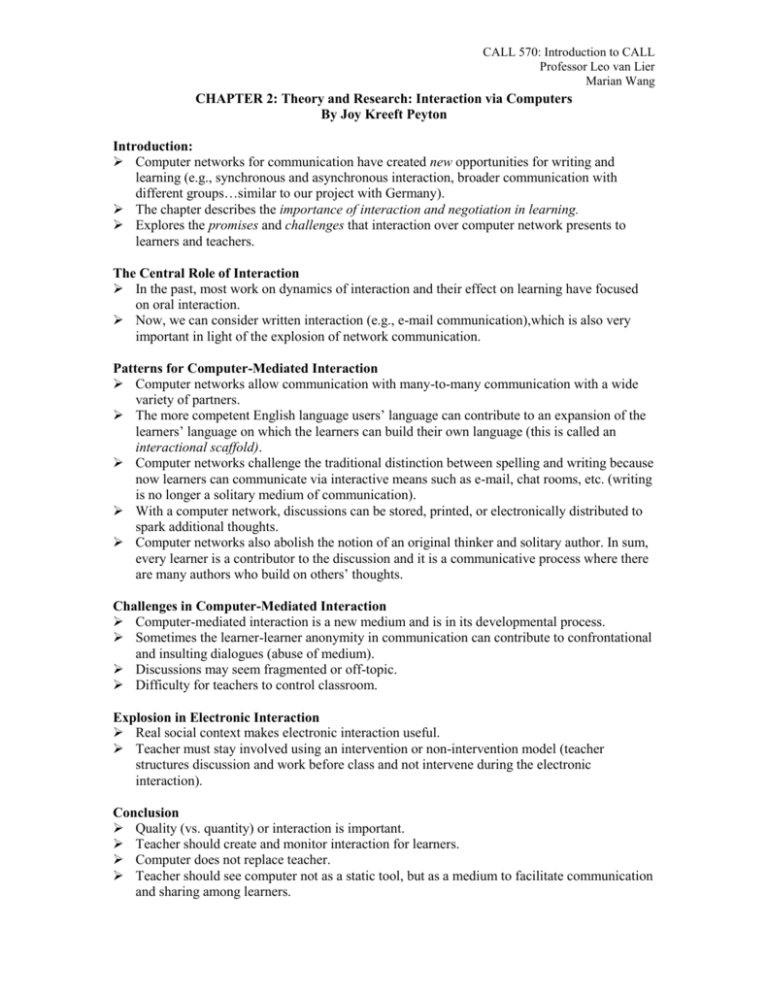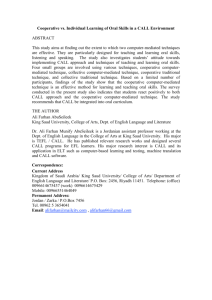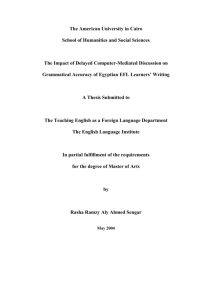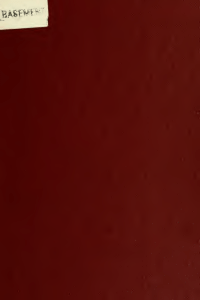CHAPTER 2: Theory and Research: Interaction via Computers
advertisement

CALL 570: Introduction to CALL Professor Leo van Lier Marian Wang CHAPTER 2: Theory and Research: Interaction via Computers By Joy Kreeft Peyton Introduction: Computer networks for communication have created new opportunities for writing and learning (e.g., synchronous and asynchronous interaction, broader communication with different groups…similar to our project with Germany). The chapter describes the importance of interaction and negotiation in learning. Explores the promises and challenges that interaction over computer network presents to learners and teachers. The Central Role of Interaction In the past, most work on dynamics of interaction and their effect on learning have focused on oral interaction. Now, we can consider written interaction (e.g., e-mail communication),which is also very important in light of the explosion of network communication. Patterns for Computer-Mediated Interaction Computer networks allow communication with many-to-many communication with a wide variety of partners. The more competent English language users’ language can contribute to an expansion of the learners’ language on which the learners can build their own language (this is called an interactional scaffold). Computer networks challenge the traditional distinction between spelling and writing because now learners can communicate via interactive means such as e-mail, chat rooms, etc. (writing is no longer a solitary medium of communication). With a computer network, discussions can be stored, printed, or electronically distributed to spark additional thoughts. Computer networks also abolish the notion of an original thinker and solitary author. In sum, every learner is a contributor to the discussion and it is a communicative process where there are many authors who build on others’ thoughts. Challenges in Computer-Mediated Interaction Computer-mediated interaction is a new medium and is in its developmental process. Sometimes the learner-learner anonymity in communication can contribute to confrontational and insulting dialogues (abuse of medium). Discussions may seem fragmented or off-topic. Difficulty for teachers to control classroom. Explosion in Electronic Interaction Real social context makes electronic interaction useful. Teacher must stay involved using an intervention or non-intervention model (teacher structures discussion and work before class and not intervene during the electronic interaction). Conclusion Quality (vs. quantity) or interaction is important. Teacher should create and monitor interaction for learners. Computer does not replace teacher. Teacher should see computer not as a static tool, but as a medium to facilitate communication and sharing among learners.











